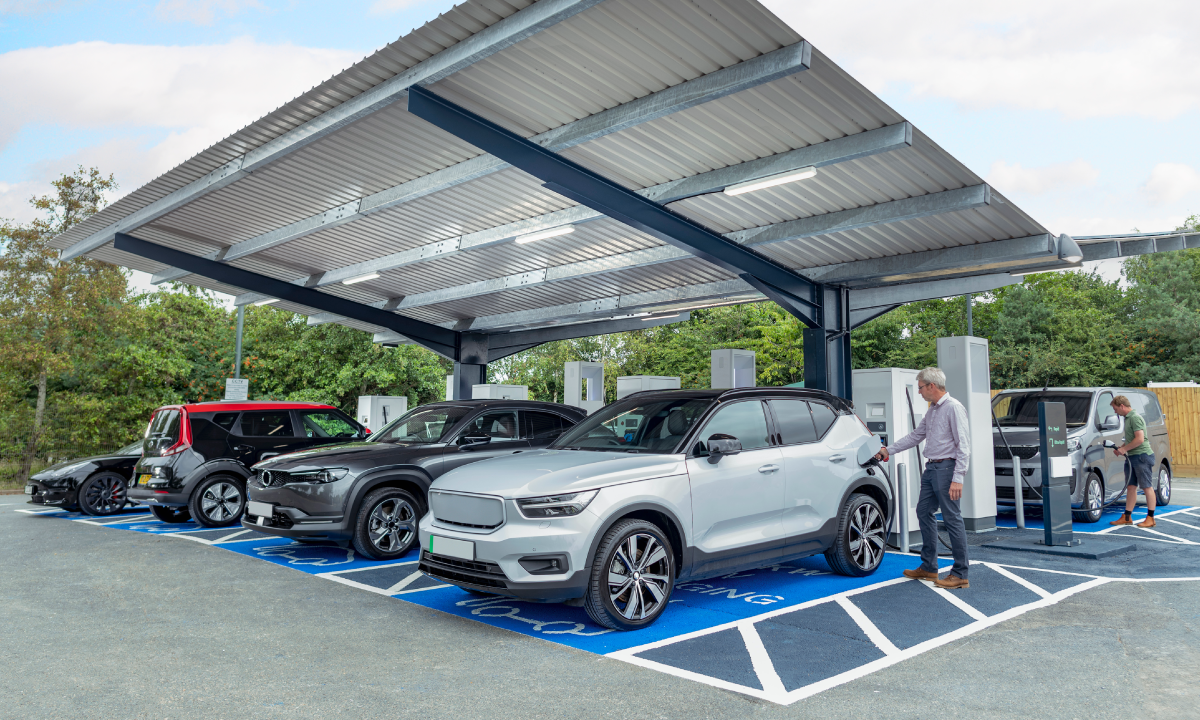Consumer demand and new investments in charging stations and battery technologies are fueling the global electric vehicle market despite supply chain disruptions, fewer incentives for drivers and companies, and historically higher costs than gasoline-powered cars.
Almost three-quarters of global consumers are interested in buying an EV, according to a March 2025 Oliver Wyman Forum survey of consumers in 17 countries. While 27% of consumers say they will delay or reconsider their EV purchase due to fewer financial incentives like rebates or tax deductions, 37% plan to buy a lower-priced EV, 32% haven’t changed their plans, and 4% expect to buy a more expensive model.
Perhaps the strongest indication of the growing global popularity of EVs is the high interest among Americans given their historic penchant for gasoline-powered cars. Seventy-two percent of Americans said they were interested in buying an EV – on par with the global average of 74% and a higher rate than those from economies where EVs are more ubiquitous, like Germany, Hong Kong, and France. EV sales increased to 1.6 million in the United States in 2024 as 24 new car models were introduced, increasing model availability by 15%, according to the International Energy Agency.
Indeed, only 24% of Americans plan to delay or reconsider an EV purchase due to fewer financial incentives, according to our survey. That may hold promise for automakers despite the US government voting in July 2025 to remove a $7,500 tax credit for EV purchases.
One likely reason for high consumer interest is that range anxiety, or concern about how far an EV can travel after one charge, is becoming less of an issue. Only 17% of those opting for a gasoline-powered car cited driving range as the top factor dissuading them from EVs, according to an Oliver Wyman Forum survey completed in October 2024. That’s down from 20% who said the same in October 2023.
A simple way for automakers to ease that concern is to emphasize that EVs can travel further than people think. Half of consumers said 250 miles was a suitable travel distance from one charge, according to a global Oliver Wyman Forum survey completed in July 2022. Yet the average EV car range in 2024 was 283 miles.
Investments are fueling EVs’ competitive edge
Venture capital and private sector investment also are driving expansion of the global EV market by funding new technology and necessary infrastructure. Sustainable mobility enterprises netted $19.6 billion from venture capital funds in 2024, according to an Oliver Wyman analysis. It’s currently the highest funded category compared to mobility services like ride-hailing, connected and self-driving services, and sales-related enterprises like online marketplaces and insurance. Six of the 10 highest funded mobility enterprises in 2024 focused on EVs or charging capacity.
The typical EV barriers are breaking down
Venture capital flows to charging startups could ease the three top barriers facing EV adoption: charging station availability, driving range, and the price of EVs compared to more traditional cars. Twenty-four percent of hybrid shoppers cite charging station availability as a barrier from buying an EV – the top reason among this cohort – while 16% cited driving range. Fourteen percent of those opting for a gasoline-powered car said the same regarding charging distance, and 17% cited driving range.
As battery technology improves and its value chain becomes more efficient, drivers will likely take longer trips, in turn creating a demand for more fueling infrastructure, particularly along highways. And with more charging stations available, driving range won’t matter as much. New investments in EVs will help grow the global EV charging market by an expected 32% annually, from $2.6 billion in 2023 to $72 billion in 2035, according to an Oliver Wyman Forum analysis. More than 1.3 million public charging points were added globally in 2024 – an increase of more than 30% compared to 2023.
Many governments are rapidly expanding charging infrastructure. The European Commission is calling for 3.5 million charging points by 2030. In the Middle East, Saudi Arabia’s Public Investment Fund launched an EV infrastructure company to install more than 5,000 charging stations across the country by 2030.
Despite a fluctuating economic environment and a reversal of incentives to buy EVs and build infrastructure in some economies, EVs have reached an unstoppable momentum globally as they become more affordable, reliable, and offer a better customer experience.

